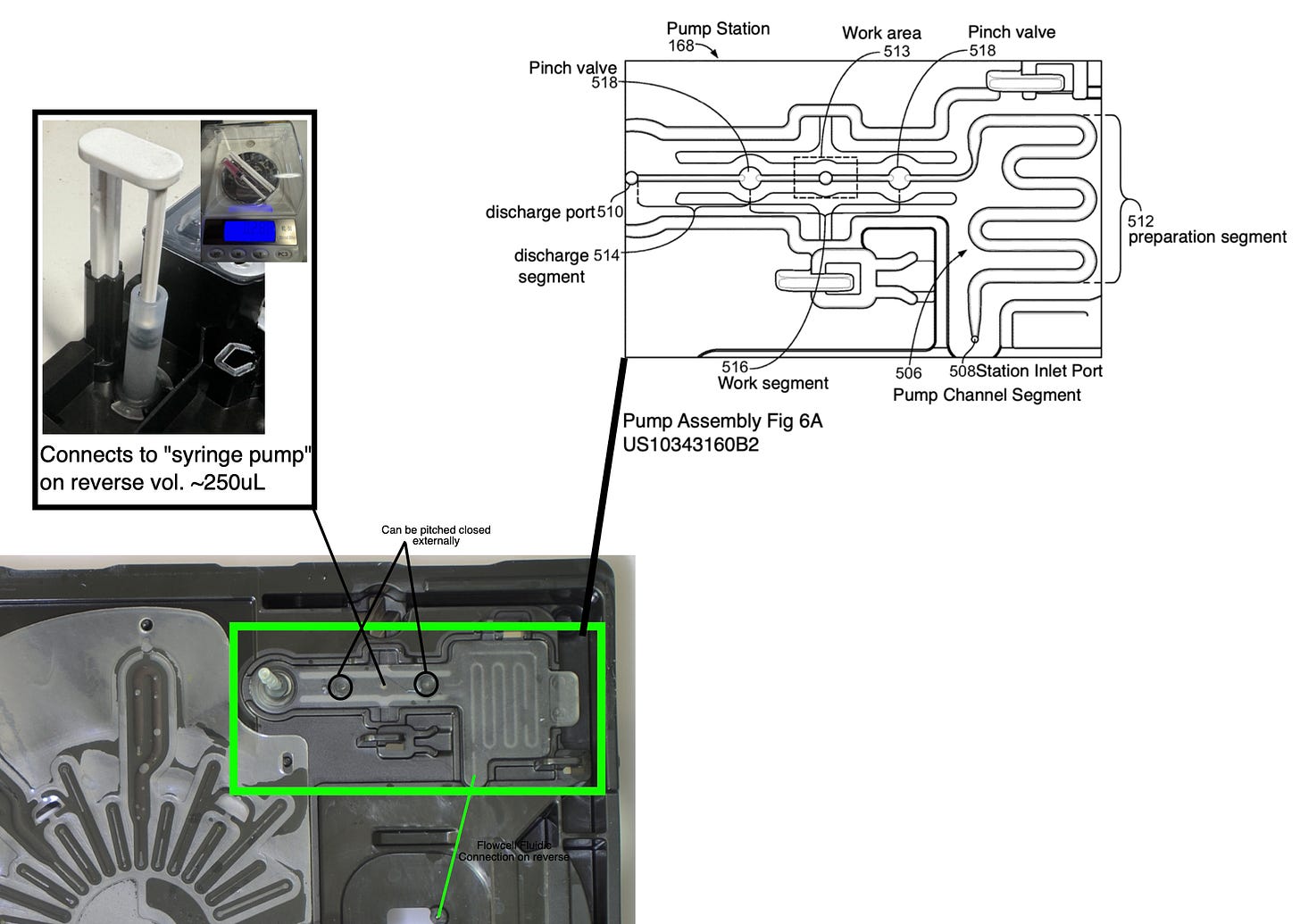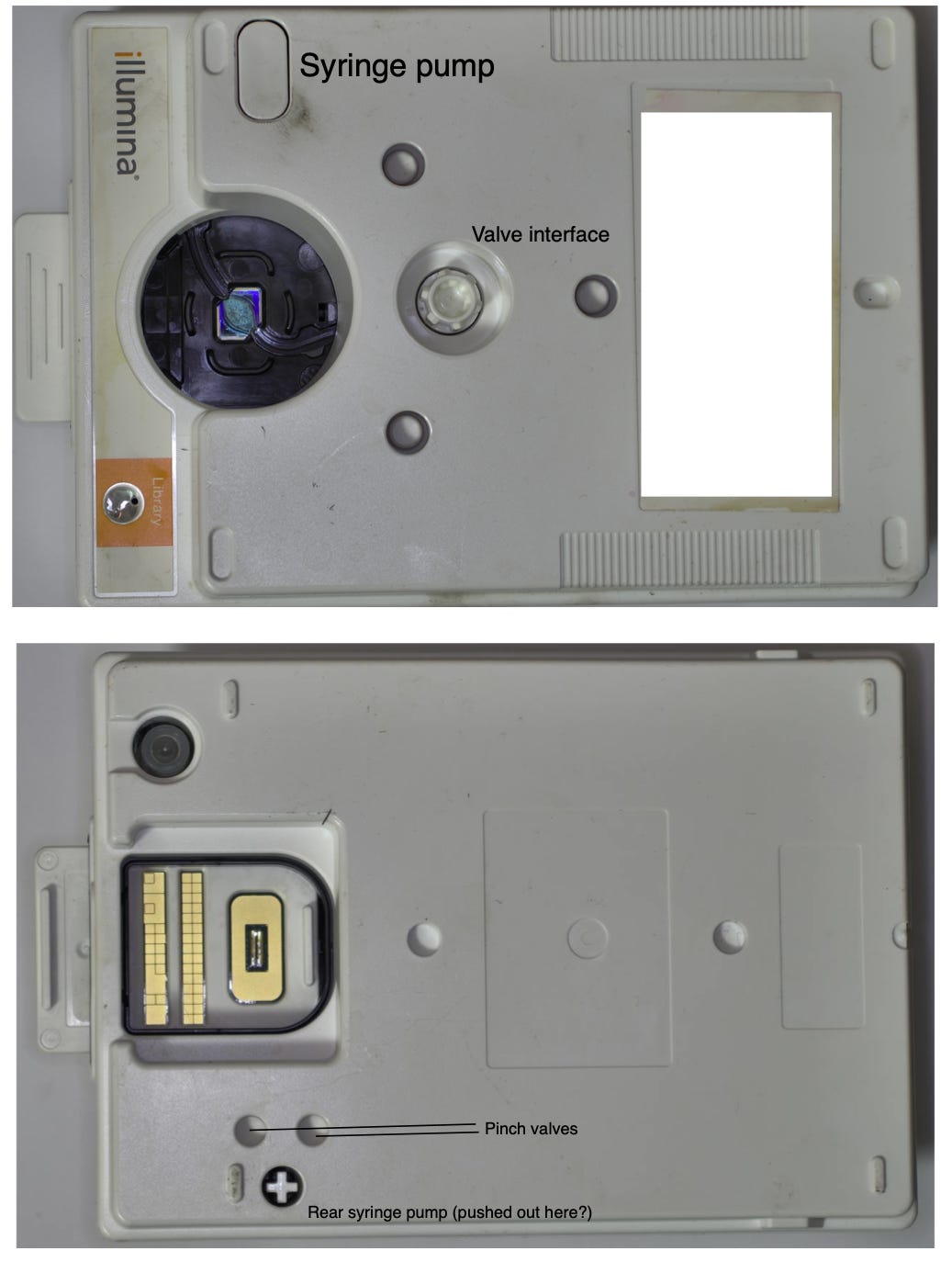The iSeq Fluidic System Is Awesome
The iSeq is clearly pretty unpopular, mostly I assume due to it’s relatively high consumables cost and low throughput.
However, it incorporates a number of neat technological approaches. Not least of which is a fluidic system which is entirely contained within the reagent cartridge. This makes for a very clean and robust design, and approach which was carried forward in the much more successful NextSeq 2000.
So I picked up an old reagent cartridge and pulled it apart to get a better sense of how these fluidic systems are built.
Inside the cartridge you find a fluidic structure built from a relatively small number of plastic components:
Today I’m going to concentrate on the pumping approach. One of the interesting things about the design is how closely it mirrors the syringe pump approach used in other Illumina instruments.
Much like these instrument a syringe pump sits on the waste side of the flowcell. This time however, it’s all fabricated out of cheap disposable plastic parts:
While it looks a little confusing laid out flat, it’s actually pretty simple. The pumping setup is described in the following schematic:
There are a couple of mechanical coupling points where the iSeq can press down on pinch valves on the back of the cartridge, and two coupling points for the syringe pump:
The following diagrams hopefully make the method by which fluid can be pulled through the flowcell and out to waste using these three actuators a little clearer:
As mentioned this is rather similar to the method used in the Genome Analyzer, MiSeq and HiSeq. The total volume of the pump (~250ul) is also about the same. The difference here is that it’s implemented in cheap plastics rather than using expensive OEM Tecan Cavro syringe pumps!
Please get in touch if you have any thoughts on this fluidic approach (new@sgenomics.org - or Discord). I plan to dig into this further, but would love to hear the opinions of folks who have worked with this system or developed similar fluidic approaches!







